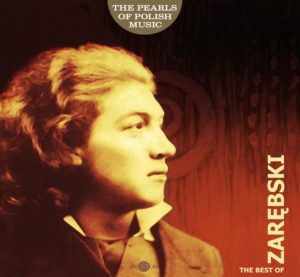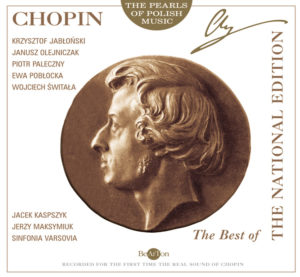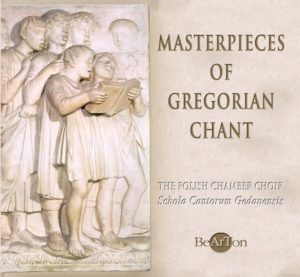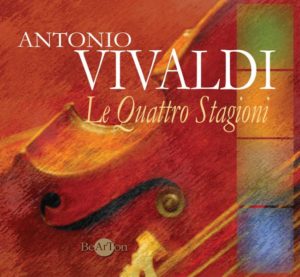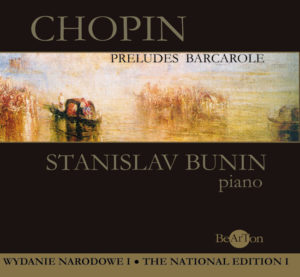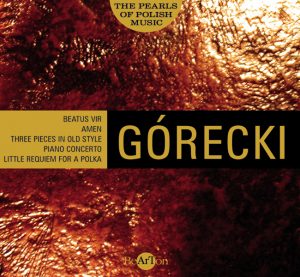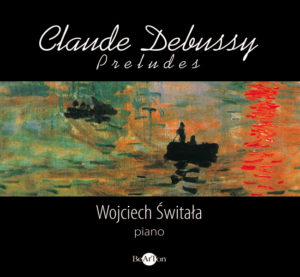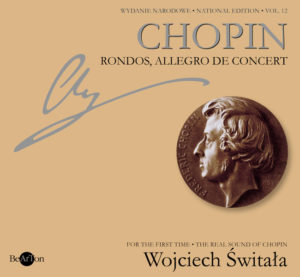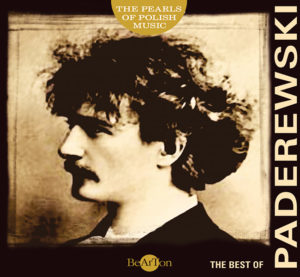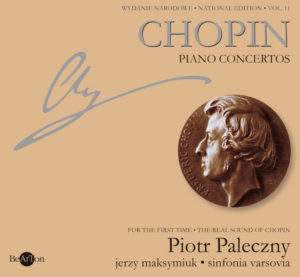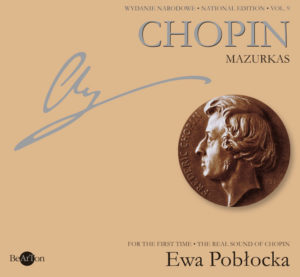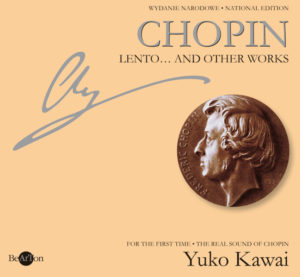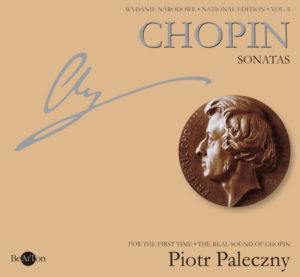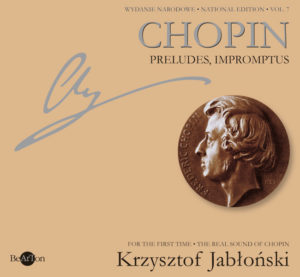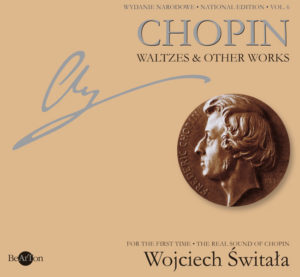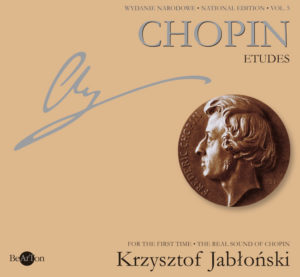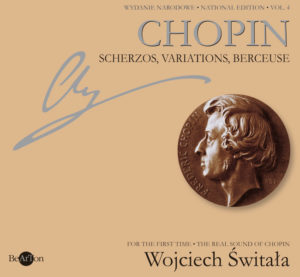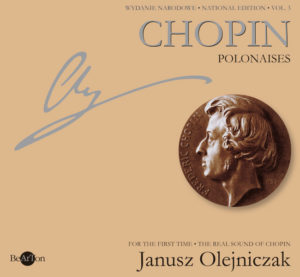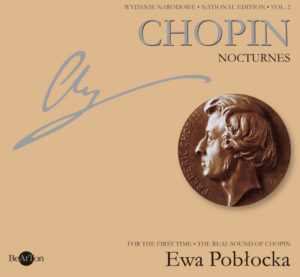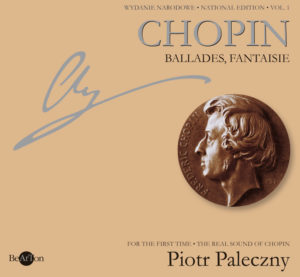Szymanowski
Szymanowski
Cat. No. CDB031
Music disc: SACD
Composer:

Karol Szymanowski
Performers:
Jakub Jakowicz – violin
Piotr Paleczny – piano
Orchestra Sinfonia Varsovia
Jerzy Maksymiuk – conductor
Disc content:
- Concert Overture Op.12 – 12’52”
- Violin Concerto No.1 Op.35 – 25’48”
Symphony No.4 Symphonie Concertante Op.60
- Moderato.Tempo comodo – 10’58”
- Andante molto sostenuto – 8’53”
- Allegro non troppo – 6’46”
Total time – 65’20”
Prizes:
Listen a part
51.99złAdd to basket
© ℗ 2006 Bearton
A Modern Romantic and Three Stylistic Changes
Karol Szymanowski was a composer of a unique personality that could only be the product of the decadent period of the European fin-de-siecle, affluent in the arts, metaphysics and clashing aesthetic trends such as neo-Romanticism, symbolism, modernism and expressionism. The turn of the century was a time of highly contrasted aesthetic ideas. Szymanowski, a man of many talents, tried his hand at poetry and prose. He was a lover and connoisseur of the arts in all its manifestations, from Greek myths to Nietzsche’s Zarathustra. He absorbed a whole range of contemporary experiences, a world with all its colours, moods and images. All of this shaped his individuality, which was prone to decorativeness, ornamentation and the exotic. He was also in close contact with the musical world of his time. He was friendly with world-famous virtuosos such as Paweł Kochański, Artur Rubinstein and Harry Neuhaus, as well as the young conductor Grzegorz Fitelberg. As a representative of a country which did not exist on the political map at the time, he resolved to catch up with the mainstream of European music. The idea was unrealistic because Szymanowski undertook it alone and without any cultural base, which could not be ensured in a partitioned Poland. And yet, against all odds, Szymanowski, even though a solitary figure in Polish music, succeeded in implementing his concept. He singlehandedly filled the gap in the evolution of Polish style after Chopin and created the foundations for new compositional techniques which gave Polish music, virtually non-existent aside from Chopin, a new lease of life. It again became a strong and unique voice. A peculiarly Polish musical idiom, revived in Romantic music and sublimated by Chopin, re-emerged in Szymanowski’s oeuvre.
Szymanowski’s early works, strikingly mature in form, drew on the music of Skryabin, Chopin, Schumann and Brahms. Extremely innovative in the context of Polish music, they marked the beginning of a period of making up for lost time and catching up with Europe. The hallmarks of these works – harmonic density, ecstatic emotionality and a programmatic character – testify to his deep links with Romanticism. Incidentally, Szymanowski’s youthful works had a bearing on the composer’s entire output. Despite some exceptions and a far-reaching simplification of texture in his most mature pieces, Szymanowski never cut his links with 19th-century music. Irrespective of the sources of inspiration, Szymanowski always remained true to himself. His was not a systematic approach to music, according to genre. He experienced it all the time in a new way – through different genres and forms. He was attracted by the diversity of music and its unlimited prospects for development. As a composer, he seemed to combine the characteristics of a romantic, a refined impressionist and an expressionist with the approach of a discoverer and experimenter. Like his predecessors, the great composers of the nineteenth century, he searched for new forms in his symphonic, chamber, piano and vocal music. In so doing, he applied various methods and compositional techniques and used diverse types of musical narration. A specific feature of Szymanowski’s sense of form is the synthesis (often in a single work) of several types of narration which had been present in European music from the 18th century: the narration characterized by the regular, structural-motoric pulse (‘classical’), romantic-impressionistic and expressionistic. Formal explorations prevented Szymanowski from repeating himself. There are not even two similar compositions in his output. As regards the symphonies, the First was unpublished because the composer considered it not mature enough. The Second consists of only two movements; the Third (‘The Song of the Night’) is a vocal-instrumental work (effectively a cantata in a single movement), while the Fourth Symphony is a blend of piano concerto and symphony. The same is true of the violin concertos. The First has a free formal structure, an impressionist-expressionist atmosphere and unique expressive and timbral qualities, while the Second, with its distinctive form and restrained expression, is imbued with the lyrical ‘highland’ note that is characteristic of the composer’s late period. And what about other genres? King Roger is an extraordinary, original and trail-blazing music drama. The Stabat Mater and the Litany to the Virgin Mary are two distinct masterpieces. The former is a setting of a medieval sequence and the latter a miniature cantata with verse by Jerzy Liebert. It is true that Szymanowski’s music contains certain recurrent melodic and harmonic formulas, timbral colours, instrumental combinations as well as degrees of aural ‘saturation’. All these features may be compared to the range of cold, cool, warm and hot colours in painting. Importantly, they always occur as he searches for new formal solutions, in compositions that are ingenious in concept and meticulously executed.
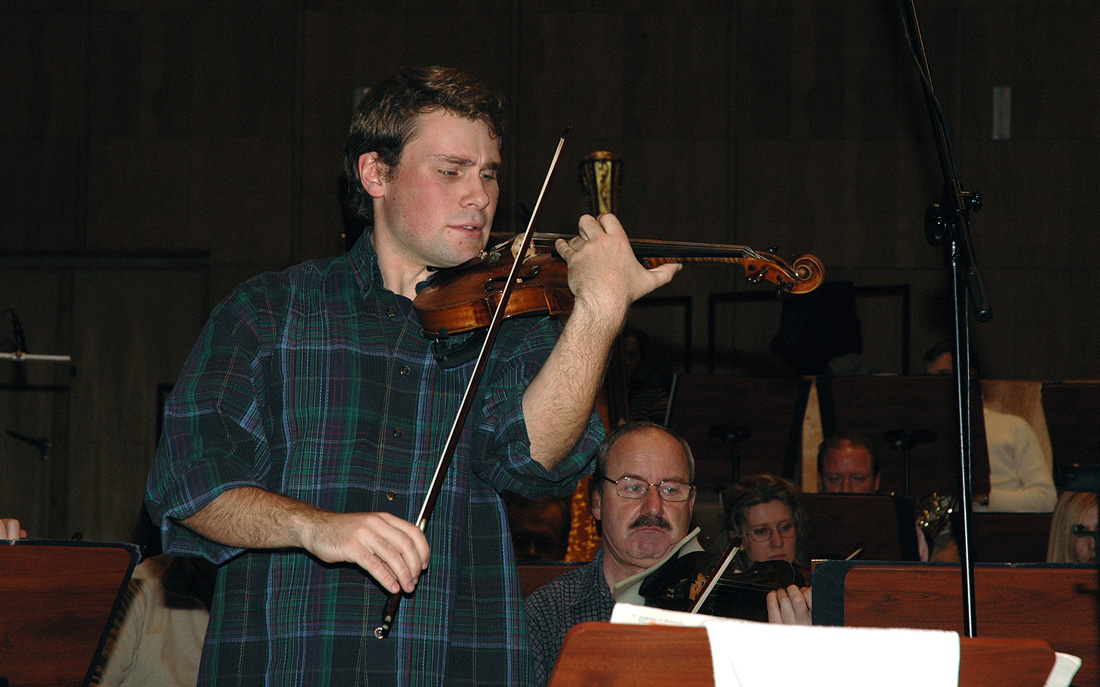
Jakub Jakowicz
The works featured in this album are characteristic of the three stages in Szymanowski’s development and are excellent examples of his highly complex style. The Concert Overture Op. 12 (1904-05) is Szymanowski’s first orchestral composition. It dates from his first period, during which the young composer fell under the influence of Skryabin, Reger and, above all, Richard Strauss in absorbing the latest musical achievements. Tackling an orchestral form was an ambitious and successful venture into large-scale symphonic writing […]. The Concert Overture is a close-knit sonata allegro with a highly effective motivic structure. As regards its technique and style, the composition exhibits an affinity with the neo-Romantic music of Strauss. This is evident primarily in the instrumentation, but also in the harmonic writing and melodic language, with its two main themes, the first being dynamic and rhythmically distinct, and the second diatonic and static, reminiscent of the horn theme in Strauss’s Don Juan.[…] For the audiences of the early twentieth century, the Concert Overture testified to Szymanowski’s innovative approach; the influence of Strauss, a composer who was considered at the time as a sort of model to follow, was seen as worthy of the highest praise.[…]
The Violin Concerto No. 1 Op. 35 (1916) exhibits the most significant features of the second period of Szymanowski’s oeuvre. It is usually described as impressionistic, which in reference to Szymanowski should be understood as an endorsement of the idea of enriching the sound material of his compositions. Szymanowski adopted only some impulses from impressionism as he turned away from German art. He was also drawn towards Roman art and held a fascination with ancient culture and the Orient. These new inspirations did not change Szymanowski’s musical language to a significant degree, as the new elements were assimilated gradually, existing in parallel with the earlier devices. The hallmark of the style of the second period was the overlapping of contrasting tendencies and their specific synthesis. This testifies to the composer’s vivid and complex artistic nature, a highly individual and unique feature in the context of the European music of the time. The first performance of the First Violin Concerto, originally scheduled for 1917, with Paweł Kochański, the unparelleled interpreter of his violin works and dedicatee of the Concerto, did not take place on the planned date due to the unstable political situation. It was eventually premiered on 1 November 1922 in Warsaw, with Józef Ozimiński, leader of the Warsaw Philharmonic as soloist, and Emil Młynarski as conductor. Kochański performed the Concerto for the first time in 1924 in New York and Philadelphia, under Leopold Stokowski’s baton, to enormous acclaim. […].
These words confirm the stylistic duality of the work and the composer’s astonishment with the final result. It is the formal design of the Concerto that is particularly surprising. Instead of the traditional ternary structure, it is in single movement, an absolute novelty in an instrumental concerto. What is more, two structural principles are interwoven here: the traditional (the thematic content) and the innovative (the use of sound as an autonomous element). Most characteristic of the latter principle is the beginning of the composition – a uniquely vibrating aural space interspersed with brief motifs which seem to be an anticipation of Messiaen’s bird motifs. The nature of the solo instrument, however, induced the composer to bring the melodic aspect to the fore. The ecstatic-lyrical, irregular and modified themes circulate, as it were, around various suspension points or disperse in figurative arabesques of an exotic flavour, in contrast to the symmetry and fast tempos of the scherzando sections. These unexpected collisions of opposing elements create the aura of a fantasia. It is further enhanced by tempo changes which go beyond the convention of the romantically-inclined rubato and become a means of integrating a form liberated from the rigid framework of metre and temporal division.
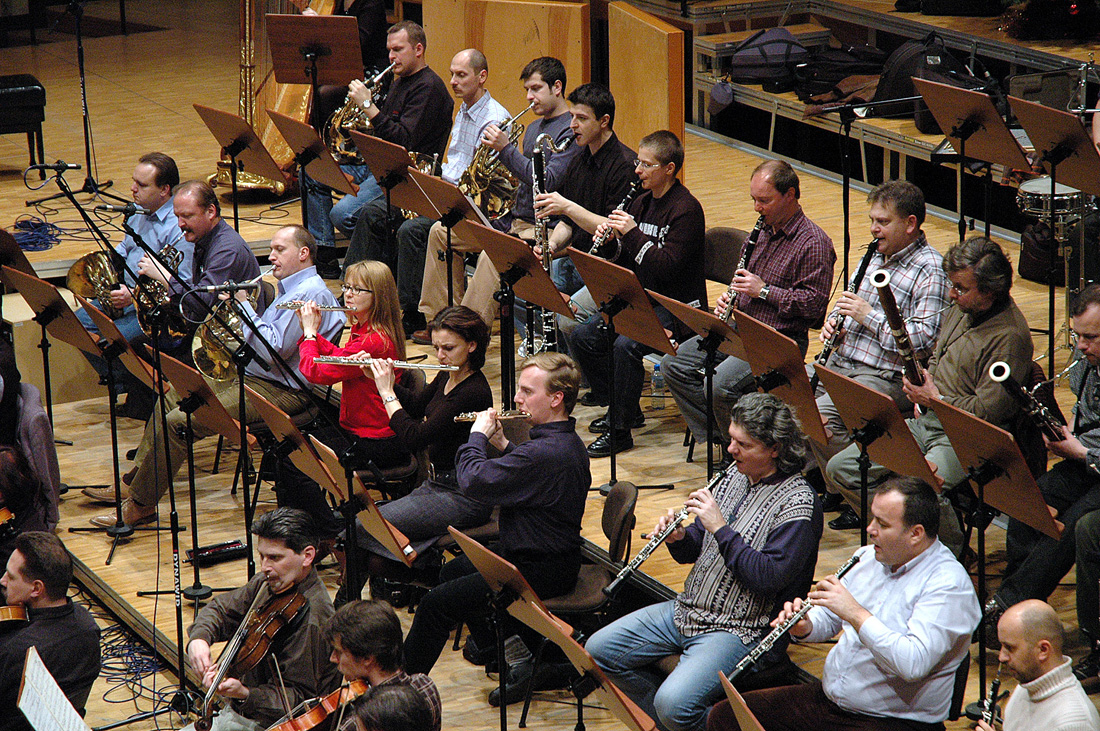
Sinfonia Varsovia
The Concerto is a fine example of Szymanowski’s specific violin style which was developed in collaboration with Kochański. Its poetic charm lies in the sublimation of the instrument’s technical possibilities – a feel for the timbre of registers, for articulatory refinement and for the ideal blending of the possibilities of the violin with the character of the music, which flows from the very nature of the instrument, as it were. As regards the balance between the solo part and the orchestra, Szymanowski adopted a fine solution, both from the acoustical point of view (the violin ‘is always at the top’, as he wrote in one of his letters) and the artistic perspective. The large symphony orchestra is employed in different combinations, dividing the work into sections of different sound volume and the timbre is filled the changing colours of different instruments. This flexibility in shaping the musical material is, alongside the chamber-like character of orchestration, the work’s most innovative feature.
Thanks to its originality and unique emotional atmosphere, the First Violin Concerto has gained a permanent place in the concert repertoire, and is a truly novel contribution to the development of the genre. All the post-1900 violin concertos preceding Szymanowski’s work (by Karłowicz, Sibelius, Glazunov, Reger, Elgar, Nielsen), belong to the nineteenth-century tradition. Due to its stylistic identity, Szymanowski’s Concerto is unique. Later decades saw a universal turn towards the neo-classical trend (Kr ˇenek, Hindemith, Stravinsky).
Szymanowski composed Symphony No. 4 Symphonie concertante in 1932 with himself in mind as soloist. The work was premiered the same year in Poznań, with Szymanowski as soloist and Grzegorz Fitelberg as conductor. Even though the work is dedicated to Artur Rubinstein, its first performer (apart from the composer) was the Polish-born English pianist Jan Smeterlin, who performed it in London in 1934. Symphonie concertante belongs to the last period in Szymanowski’s career, commonly referred to as national, and is to a large extent representative of these years. From 1920 onwards, the composer tried to forge a new aesthetic, his efforts being linked to his activities as a promoter of national culture after Poland had regained independence after more than 120 years of foreign rule. Szymanowski’s great respect for Chopin lay at the roots of this resolve to formulate, in his music, the idiom of Polishness, as a signpost for his music.[…] Szymanowski, however, did not identify the notion of national style with the folk character of his art. In fact, he dismissed all attempts to ascribe folkloristic tendencies to him (with the exception of the ballet Harnasie). For me folklore has solely the importance of a fertilizing factor. My striving was to create a national style from Słopiewnie on wards, a piece in which there is not a touch of folklore, like in the Fourth Symphony… Indeed, the sound fabric of the work is not rooted in folk music, despite the use of dance rhythms. Szymanowski himself stressed that the overall character of his style is very Lechiti. [Lechitic refers to Lech, one of the legendary founders of Poland and indicates something of the essential Polish spirit – translator’s note].

Recording session
It is a fact that after 1920 the composer’s original idiom incorporated folk elements, resulting in a simplification of his expressive devices. It was stimulated in some measure by Szymanowski’s fascination with the music of Stravinsky, a composer who, according to Szymanowski, was successful in achieving what he himself set as his principal goal – to preserve a national identity while at the same time creating universal values. The genre of the sinfonia concertante, its ancestry going back to the 18th century, was favoured by the neo-classical composers of the 1920s and 30s. A compromise between the symphony and the concerto, it took the soloistic element and ternary structure from the latter and the orchestral texture and sound from the former. Szymanowski’s Symphonie concertante, with its three traditional movements, has all these features. The first movement has a free sonata form. It is followed by the lyrical second movement with a ternary reprise, whereas the third movement is reminiscent of a rondo. The piano is the concertante instrument, even though in previous centuries other instruments were also treated as solo instruments in sinfonia concertante (flutes, bassoons, horns, trombones). The realization of the specific form has important consequences. There is a return to tonality and thirds-based consonances in the harmonic writing, a melodic design based on reduced intervals and vivid themes, and the use of precise dance formulas in the rhythmic structure. The treatment of the orchestra is also important.[…]. Thanks to the lucidity of the orchestration, melodic inventiveness and the excellently balanced dynamics, Szymanowski’s Symphonie concertante is a highly coherent piece, in which the overall idea of the soloist concertising with the ensemble serves as the unifying factor.
Marek Wieroński
Reviews
This is an important disc as it features works by Szymanowski, a composer who is still insufficiently known and promoted too rarely, recorded by means of modern technology in the interpretation of outstanding Polish musicians… The youthful Concert Overture is a curiosity… .Maksymiuk and Sinfonia Varsovia bring to the fore all the merits of the piece and are able to prove by their interpretation that it is not a copy of Richard Strauss’s music… but the work of a composer of great individuality… Jakub Jakowicz approaches the Violin Concerto Op.35 differently than his predecessors… he articulates each motif with incredible precision, draws out the high cantilenas and provokes the listener with cascades of double notes. He is very consistent in this type of narration and has found excellent partners in Jerzy Maksymiuk and members of Sinfonia Varsovia. The Fourth Symphony is treated by the pianist Piotr Paleczny andi Maksymiuk as a symphony without the hallmarks of an instrumental concerto. The fantastic rapport between these two musicians was evident in their previous BeArTon recordings of works by Paderewski and Chopin’s Concertos; in this CD – in view of the character of the composition – the unanimity of the soloist and conductor is even more valuable… The sound engineers – Zbigniew Kusiak, Andrzej Lupa and Julita Emanuilov – also deserve words of recognition. Listening to this disc in SACD stereo format demonstrates the beautiful sound of the piano while the meticulously reconstructed space helps one to hear the piano in the polyphonic thicket of the orchestra…
After the success of the first Polish SACD recording with Lutosławski’s music (the ‘Fryderyk’ Award), BeArTon has issued another SACD album in its series The Pearls of Polish Music, devoted to Karol Szymanowski. The BeArTon director, producer Marek Wieroński, once again invited into the studio his favourite orchestra, Sinfonia Varsovia under Jerzy Maksymiuk, and the same team of sound engineers. The disc was produced in a hybrid version and so one can listen to it on all types of CD and DVD equipment, as well as use the SACD to obtain the best quality of sound reproduction. The real, natural acoustic depth of the Witold Lutosławski Polish Radio Studio can be appreciated only when using the multi-channel system.
The very news of this CD reaching the market is likely to cause a rise in the blood pressure of many a music lover….Sinfonia Varsovia commands an extraordinary power of expression, coupled with meticulous attention to detail. The performance of Jakub Jakowicz is in fact worthy of a separate review. The interpretative capabilities of this young violinist seem to be boundless. For a dessert, we have been offered the Sinfonie Concertante, which under Maksymiuk’s baton gains an incredible intensity. Piotr Paleczny fits excellently into this concept…For me – the year’s highlight. I strongly recommend.
This is one of two hybrid SACDs issued, so far, by BeArTon in their series ‘The Pearls of Polish Music’.
The recording team is the same as that for the earlier Lutoslawski disc and the sessions took place between December 2004 and February 2005 at the Concert Studio of Polish Radio in Warsaw. The works were recorded in HD PCM and converted to DSD by Polyhymnia, and like the Lutoslawski disc this one is another winner.Each of the three works on this Szymanowski disc is from one of the three periods that characterise Szymanowski’s compositional development.
The Concert Overture is an early work in which the influence of Richard Strauss (Don Juan in particular) looms large. Nevertheless it already shows the emergence of a composer of genius with its brilliant orchestration and rich melodic invention. Jerzy Maksymiuk and the Sinfonia Varsovia play it with a sweep and passion that is matched by the full and spacious recorded sound. […]
By the time Szymanowski composed his Symphony No. 4 in 1932, subtitled Symphonie Concertante due to its large piano part, he had become interested in Polish folk music, especially that from the Tatra mountain region. It is an exhilarating work that, with its driving rhythms, brings to mind the piano concertos of Bartok and Prokofiev. The piece is dedicated to Arthur Rubinstein who once made a recording of it in the 1950s. Here the pianist is Piotr Paleczny who recorded the piece for EMI about twenty-five years ago and has played it frequently in the concert hall. A comparison between the two versions reveals a greater intensity and depth in the new one aided, of course, by the magnificent recording quality that carefully balances the piano with the orchestra. The Sinfonia Varsovia and their conductor play throughout with commitment and a natural feeling for the idiom. Try the barbaric dance that begins the final movement of the symphony to be convinced of the standard of the playing and recording.
The 5.0 surround sound adds its usual benefits to an already outstanding SACD.

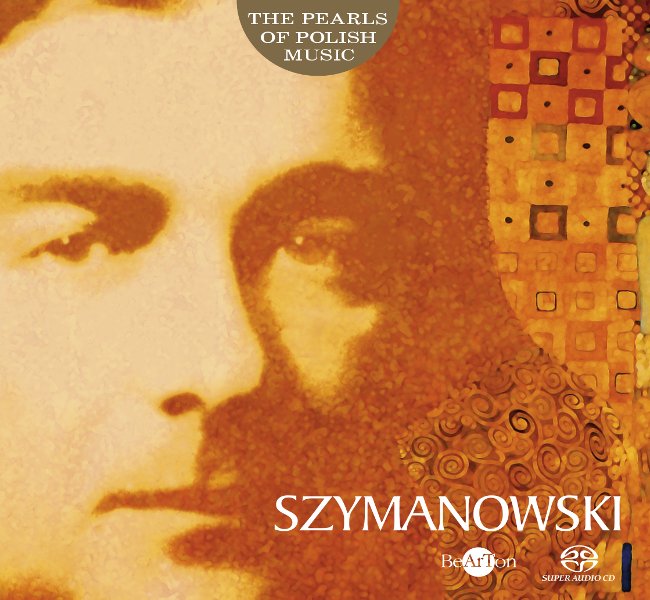





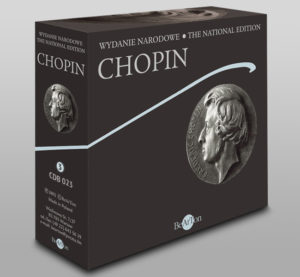
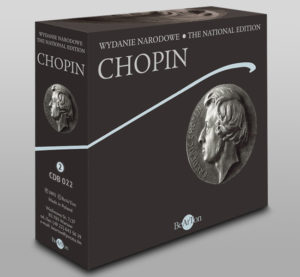
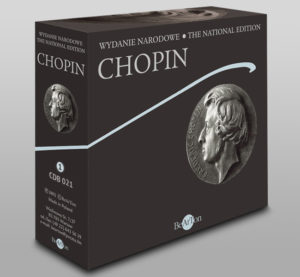
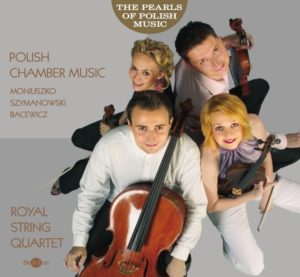
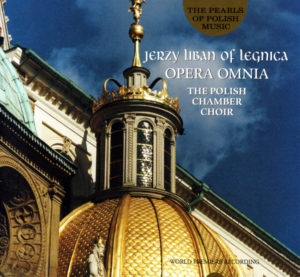
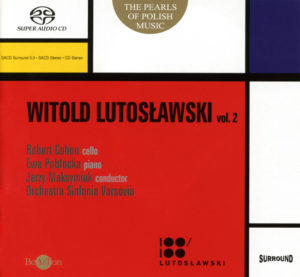
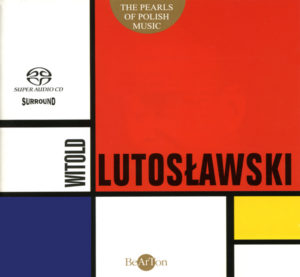
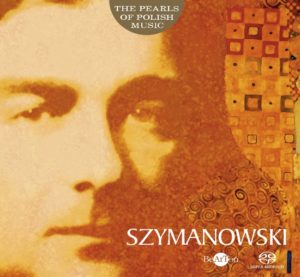
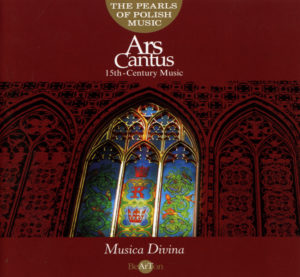
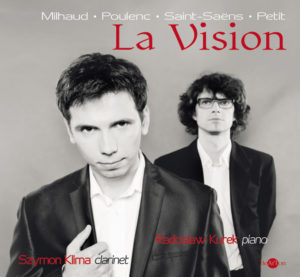
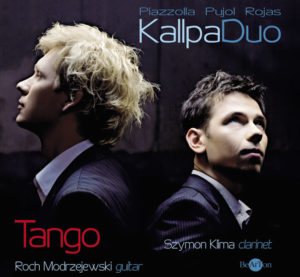
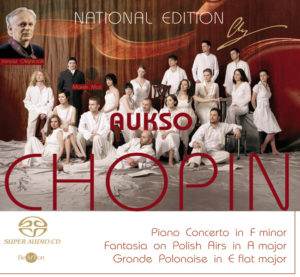
![Chopin – Walce [B] i inne utwory CDB047](https://www.bearton.pl/wp-content/uploads/Chopin-Walce-B-i-inne-utwory-CDB047-A-300x277.jpg)
![Chopin – Pieśni [B] CDB046](https://www.bearton.pl/wp-content/uploads/Chopin-Piesni-CDB046-A-300x277.jpg)
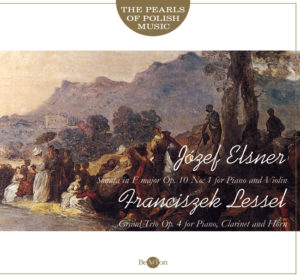

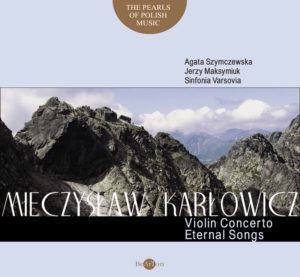
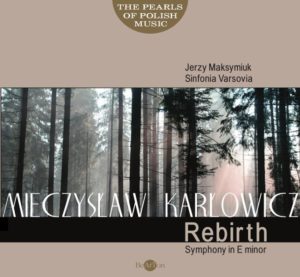
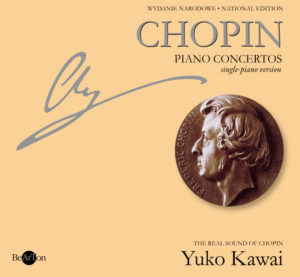
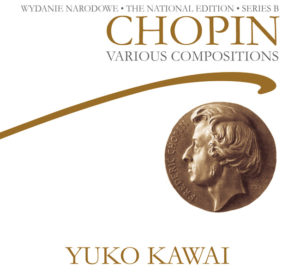
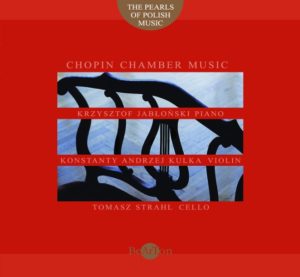
![Chopin - Mazurki i inne utwory [B] CDB038](https://www.bearton.pl/wp-content/uploads/Chopin-Mazurki-i-inne-utwory-B-CDB038-A-300x277.jpg)
![Chopin – Polonezy [B] CDB037](https://www.bearton.pl/wp-content/uploads/Chopin-Polonezy-B-CDB037-A-300x277.jpg)
